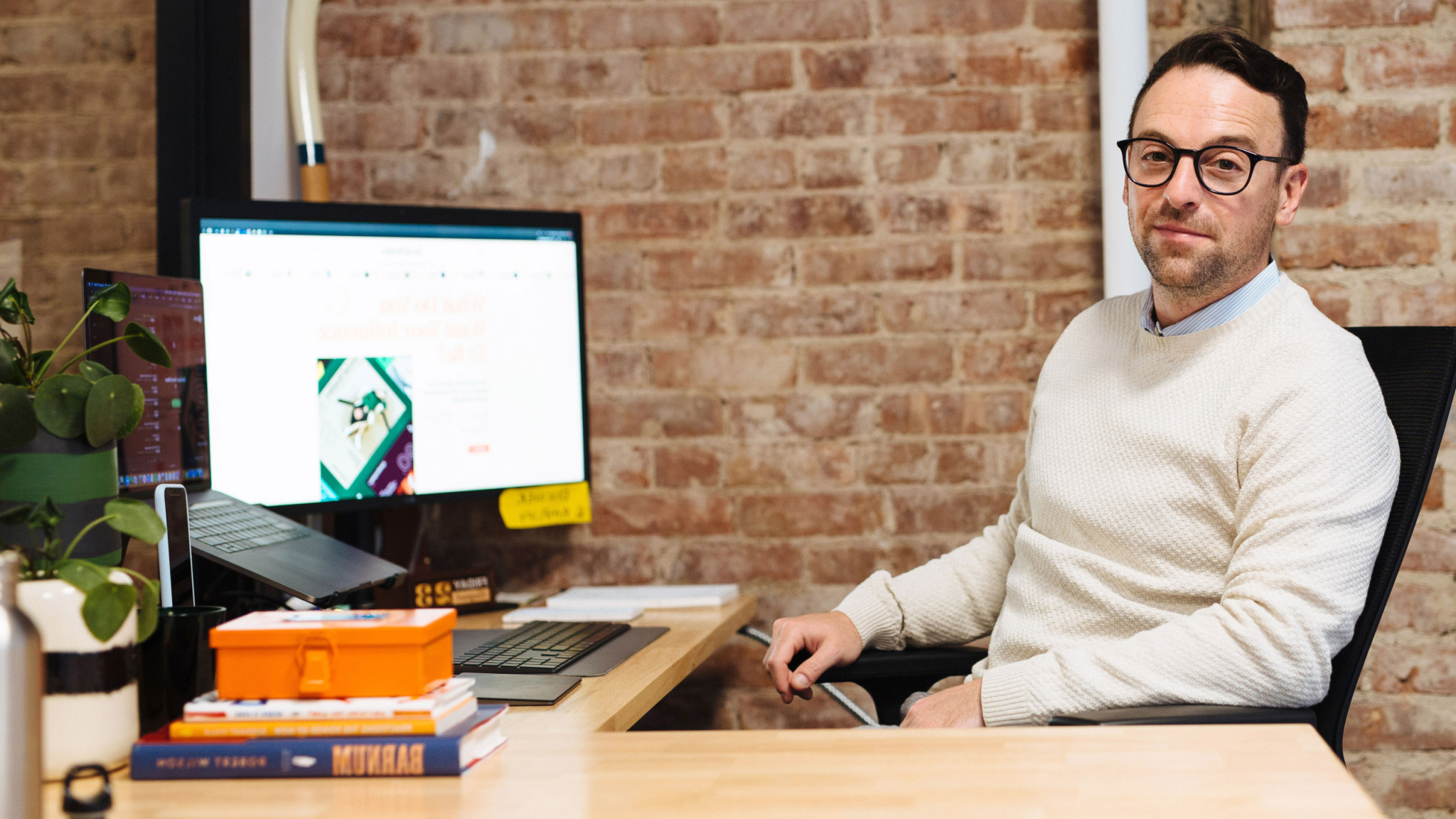During the working day, tasks are often prioritised (or not) according to the needs of others or the immediacy of deadlines. This can happen in our personal lives, too, with limited time spent on activities that are actually important, and more energy spent being ‘busy’. Prioritising tasks effectively – with intention and according to future goals – can change this, ensuring that every task you tackle drives value and keeping unimportant tasks from cluttering your to-do list.
- Seven strategies for prioritising tasks at work
- 1. Have a list that contains all tasks in one
- 2. Identify what’s important: Understanding your true goals
- 3. Highlight what’s urgent
- 4. Prioritise based on importance and urgency
- 5. Avoid competing priorities
- 6. Consider effort
- 7. Review constantly and be realistic
- Quick tips for effective prioritisation
- Prioritise your time and be realistic
By implementing prioritisation strategies, you can drastically change the arc of your working day to really make the most of your time in the office – and at home. These strategies will help you evaluate and set your top priorities.
Seven strategies for prioritising tasks at work
Thoughtful prioritisation typically involves creating an agenda, evaluating tasks, and allocating time and work to bring the most value in a short amount of time. Prioritisation should be flexible, as you may need to interrupt low-priority tasks for urgent must-dos.
1. Have a list that contains all tasks in one
Effective prioritisation comes from understanding the full scope of what you need to get done – even the most mundane tasks should be written down and considered. To give yourself a complete picture, it’s a good idea to include both personal and working day tasks in a single task list.
Everything from picking up your dry cleaning to scheduling a one-on-one meeting with your boss should be captured in the same place. Once everything is written down, prioritisation typically happens according to the importance, urgency, length and reward of each task.
2. Identify what’s important: Understanding your true goals
While it might seem like an immediate time management strategy, prioritisation is key in achieving long-term goals. Understanding what you’re really working towards – be it a promotion, a finished project or a career change – helps you identify the tasks most pertinent to those future outcomes. It can be a good idea to break these larger goals into smaller, time-related goals. For example, a yearly goal can be deconstructed into monthly to-do lists, which then lead to weekly tasks, daily priorities, etc.
For Alejandro Cerecedo, a senior fashion account executive at PR company Another Company and a member at WeWork Reforma 26 in Mexico City, setting long-term goals is how he aligns and motivates his team at the beginning of each year. ‘We talk about their personal and professional goals, and we set a timeline for how we’re going to achieve them,’ Cerecedo says.
This big-picture thinking is vital in prioritising effectively: It’s a common misconception that being busy equates to progress. However, filling your day with tasks that have no impact on an ultimate goal is time wasted. Be honest with yourself about the lasting value of each task and always have the end-goal in mind.
3. Highlight what’s urgent
Your to-do list should provide full visibility of deadlines, helping you to identify which tasks must be completed promptly and to plan ahead according to future deadlines.
Creating deadlines even when they’re not formally required is also important; otherwise, you will continue pushing back important tasks simply because they aren’t time-sensitive. (This strategy can also be helpful in increasing productivity and reducing procrastination.)
4. Prioritise based on importance and urgency
In his 1989 book The 7 Habits of Highly Effective People, businessman and keynote speaker Stephen Covey suggests tasks should be categorised (and then prioritised) according to importance and urgency.
- Urgent and important: These tasks should be done first
- Important but not urgent: Block off time in your diary to get this done, without interruption
- Urgent but unimportant: Delegate. Delegate. Delegate.
- Neither urgent or important: Remove from your to-do list
Another strategy for ensuring important tasks are prioritised – even above asks from pushy stakeholders or ‘urgent’ ad-hoc requests – is the Most Important Tasks (MIT) methodology. This strategy involves creating a separate list of just three tasks that must be done that day. These tasks should be chosen more for their importance than their urgency. To decide, ask yourself goal-orientated questions: What tasks will have the biggest impact on the end result? What can I get done today to further my progress towards that goal?
5. Avoid competing priorities
When the tasks you’re working on aren’t particularly difficult, it’s relatively easy to manage them in tandem. However, as difficulty increases, research shows that people who are in positions of power are more likely to prioritise a single goal, whereas people in low-powered positions will continue to try and manage multiple priorities. This dual-task strategy has been linked to a decline in performance, which means the most important tasks aren’t fulfilled to the highest standard.
A tactic for staying focused on one important task at a time is identifying likely distractions – concurrent tasks or ad-hoc requests – and actively avoiding them throughout the day. This means if you’re tasked with pulling data for a project at the same time that you’re creating slides for a presentation, you should prioritise one task and avoid any work, emails, messages or preparation related to the other.
6. Consider effort
When staring at a long to-do list, it’s easy to become overwhelmed by the work that needs doing – a feeling that reduces productivity and leads to procrastination. A strategy to overcome this involves evaluating tasks according to the effort required to complete them.
If your to-do list is becoming too burdensome, prioritise those tasks that require minimal time and effort and move through them quickly. This clearing of tasks will give you some breathing space and generate a sense of accomplishment to propel you throughout the day.
7. Review constantly and be realistic
One of the steps in the five-step ‘Get Things Done’ (GTD) methodology from productivity consultant David Allen involves critical reflection. Frequently reviewing your task list and priorities is key in ‘regaining control and focus’, Allen argues.

Quick tips for effective prioritisation
As you realise the necessity of proper prioritisation, it can suddenly feel more complicated – and more stress-inducing – than creating a simple task list. The key strategies mentioned above are summarised below, to help you set your priorities with intention.
- Write everything down: Personal and work tasks should be captured in one place.
- Evaluate long-term goals: Consider your larger long-term goals, and the work you need to do to reach them.
- Break down larger goals: To understand how to achieve your long-term goals, break them down into yearly, monthly and weekly achievements.
- Create clear deadlines: Give yourself full visibility of deadlines and create deadlines for yourself when none are formally required.
- Employ the urgent-versus-important method: Prioritise urgent and important tasks; set a specific time to work on important non-urgent tasks; and delegate or remove all other tasks.
- Create a daily MIT list: Write down three important tasks that should be done that day. These tasks should always relate to your larger, future goals. TEST
- Avoid distractions: Intentionally steer clear of competing tasks, especially as task difficulty increases.
- Consider effort: When your task list is becoming too much, prioritise according to effort and breeze through those easier tasks more quickly.
Prioritise your time and be realistic
No matter how well you prioritise, there is only so much you can achieve in one day, and certain distractions are impossible to avoid. It’s important to be realistic in setting goals and prioritising tasks. Otherwise, you’ll create false expectations of those around you, and you’ll constantly feel as if you’re falling behind.
Remember, the purpose of prioritisation is to spend time working on the important tasks, those things that will make a difference in the long run and move you in the right direction. When prioritisation is handled well, you’ll feel less reactive and more focused and intentional. The aim is to complete work that signifies true progress, and let all the rest – all the ‘busyness’ – fall by the wayside.
Caitlin Bishop is a writer for WeWork’s Ideas by We, based in New York City. Previously, she was a journalist and editor at Mamamia in Sydney, Australia, and a contributing reporter at Gotham Gazette.
Rethinking your workspace?










